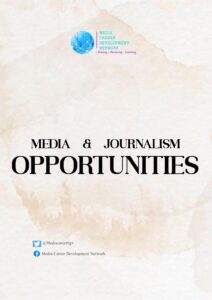By Lekan Otufodunrin
Entries for media awards are supposed to be the best publications and productions in the print, broadcast and online media by journalists.
The awards are meant to reward excellence in various categories. It is not expected that journalists who qualify for the awards will submit substantial entries.
However, if the observation of the Chair of the Judges’ Board of the Wole Soyinka Award for Investigative Reporting, Professor Lai Oso is anything to go by, there is need for improvement in the quality of entries submitted for awards in the country.
According to Oso, “Ninety per cent of all submitted entries for the award were routine one-time stories, opportunistic photographs, basic television features and radio magazine reports, of which most were badly edited, rarely investigative in nature and could only do well as feature stories.”
He however commended the online entries assessed as being analytically better, more in-depth and clearly showing the future of reporting.
Chairman of the Panel of Assessors for the Nigeria Media Merit Award (NMMA) Professor Ralph Akinfeleye, also lamented the quality of the 894 entries submitted for the 2015 edition of the award .
He said the quality of many of the print entries were very poor and far below what was expected of national newspapers.
Here is my take on the categories of poor entries noted by Professors Oso and Akinfeleye which journalists should avoid submitting for awards.
Routine one-time stories
If a story is mainly based on a press statements and regular assignments without any additional background, in-depth investigation, research and interviews, it does not qualify for consideration for any award. Such stories are routine “He said, He added” reports which any journalist can write.
Except in some peculiar instance, no matter how well written a routine story is or its placement, it cannot be the basis for winning awards.
Award-winning stories are supposed to be products of follow-ups on routine stories or deep thinking, research and investigation on various perspectives on an issue or trend.
Opportunistic photographs
There is this joke about photojournalists taking what is called “putting heads together” pictures. They sometimes tell special guests at events to pretend to be discussing while the photojournalists take what they consider action photographs.
Award-winning photographs are not supposed to be arranged. The eagle lens of the photojournalist is supposed to be alert to capture the action moment.
Such pictures must tell a story like any well written story. Photojournalists must know that they are not just photographers who have to tell those they want to take their pictures to “look into the camera”.
They are supposed to be journalists who tell stories with their camera.
Basic Television features
Like routine stories, basic television features are ordinary reports from routine assignments. It doesn’t matter how long the story is. if it is not a well-researched documentary or investigation with well edited interviews on various perspectives in the reports and appropriate shots, there is no point entering such features for awards. An award-winning Television features must be very revealing and gripping.
Basic radio magazine reports
These kind of reports are also not extraordinary. They are unnecessarily long news reports and interviews. They are at best extended reports based on routine reports and interviews. Many relevant issues are not covered and well analysed in the reports.
Badly edited reports
No matter how good a report is, if it is badly edited with typographical and grammatical errors, it cannot be selected as winning entry.
An excellent report should be well-written and well-edited. It should go through necessary editorial quality control to avoid making avoidable errors.
Award-winning reports should be fact-checked.





